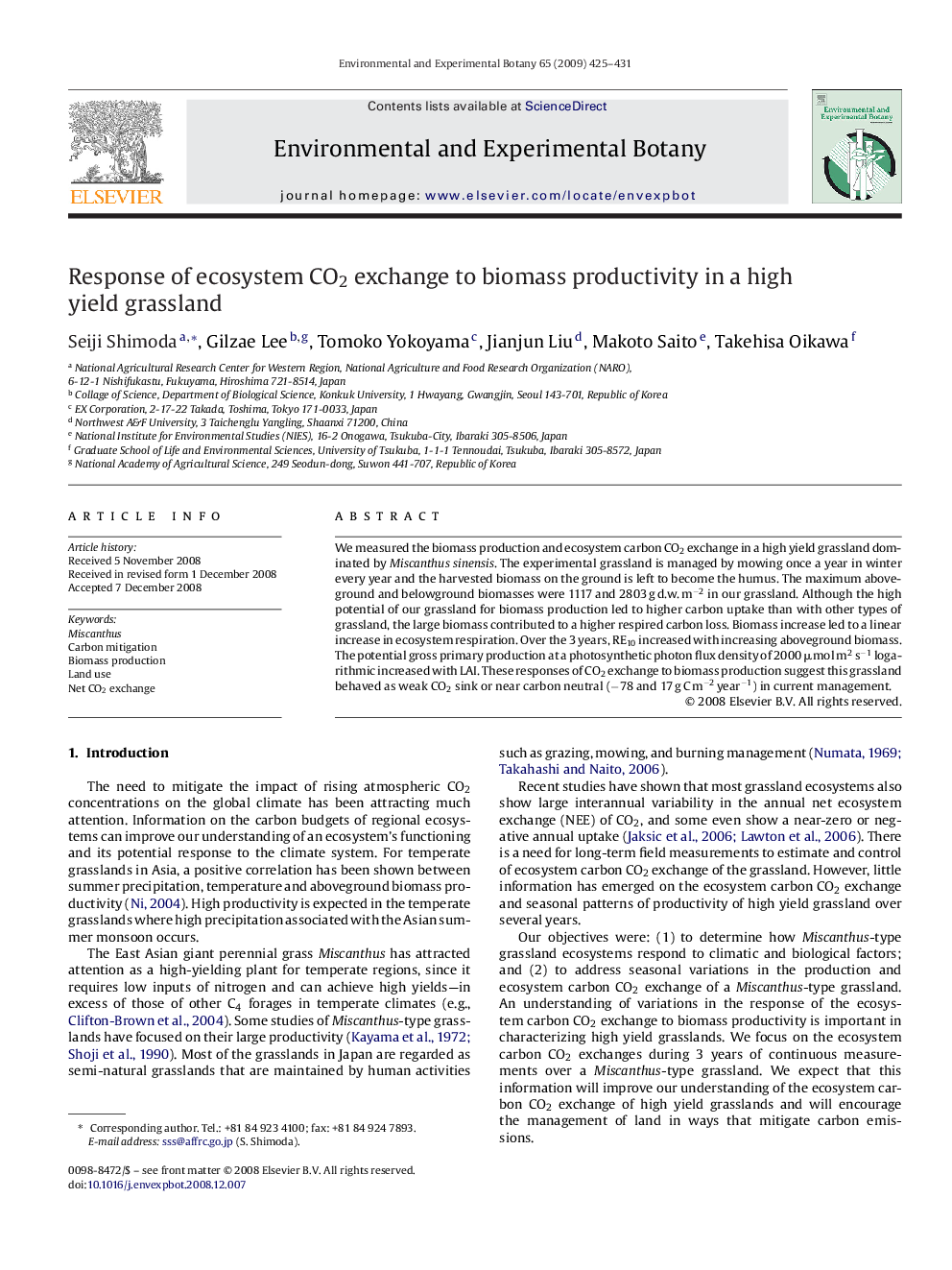| Article ID | Journal | Published Year | Pages | File Type |
|---|---|---|---|---|
| 4555245 | Environmental and Experimental Botany | 2009 | 7 Pages |
Abstract
We measured the biomass production and ecosystem carbon CO2 exchange in a high yield grassland dominated by Miscanthus sinensis. The experimental grassland is managed by mowing once a year in winter every year and the harvested biomass on the ground is left to become the humus. The maximum aboveground and belowground biomasses were 1117 and 2803 g d.w. mâ2 in our grassland. Although the high potential of our grassland for biomass production led to higher carbon uptake than with other types of grassland, the large biomass contributed to a higher respired carbon loss. Biomass increase led to a linear increase in ecosystem respiration. Over the 3 years, RE10 increased with increasing aboveground biomass. The potential gross primary production at a photosynthetic photon flux density of 2000 μmol m2 sâ1 logarithmic increased with LAI. These responses of CO2 exchange to biomass production suggest this grassland behaved as weak CO2 sink or near carbon neutral (â78 and 17 g C mâ2 yearâ1) in current management.
Related Topics
Life Sciences
Agricultural and Biological Sciences
Ecology, Evolution, Behavior and Systematics
Authors
Seiji Shimoda, Gilzae Lee, Tomoko Yokoyama, Jianjun Liu, Makoto Saito, Takehisa Oikawa,
